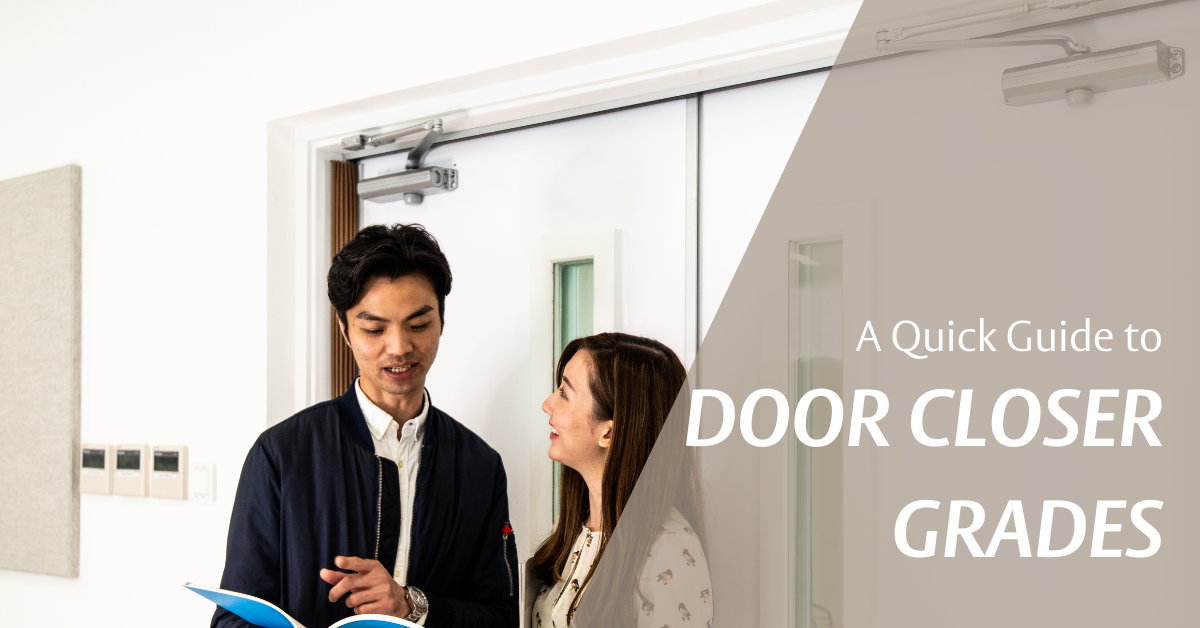A Quick Guide to Door Closer Grades
Door closers are assigned one of three grades as determined by ANSI/BHMA 156.4. Ultimately, these grades serve as a benchmark for endurance.

Did you know not all door closers are created equal? Door closers are assigned one of three grades as determined by ANSI/BHMA 156.4. This universal rating tests the number of open-close cycles the door can withstand. The three grades measure longevity, providing architects with a fast and easy way to specify a door closer with the right durability.
Different Doors Need Different Grades
Selecting a door closer grade is determined by the door itself. Commercial doors are divided into several categories, each requiring a different level of durability. Consider how interior and exterior doors have separate operating demands. Fire-rated doors also have additional regulations to meet.
Regardless of code considerations, all doors are subject to physics. Factors like door weight, wind speeds and stack pressure all affect the specification process. Even elements like friction from door sweeps or the number of hinges impact opening and closing.
“The function of a door closer is more involved than simply pulling the door closed. All these features are covered by detailed performance tests: range of checking control, two speeds of closing, adjustable closing speed, cylinder checking, overload abuse, and opening angle,” explains BHMA.
The three grades are an expression of wear and tear. The grade is equivalent to how many times the door will dependably open and close. Grades are also assigned to different closer types: surface mounted, concealed in the door, overhead concealed and concealed in the floor.
{door_closer_product_page}
For example, Grade 1 is usually reserved for exterior doors because it has the highest cycle testing at 2 million. Main entrances, especially aluminum storefront doors, require a door closer that will operate in harsh conditions. A higher number of cycles is best for door closers that will experience heavy traffic.
If a door closer mistakenly has a grade with lower cycles, however, the unit will wear out faster. Because it isn’t designed to withstand high use, the door closer won’t meet performance expectations. For example, it’s unlikely that Grade 3 would be paired with an exterior door.
Keep in mind that door closer grades are separate from spring size. Both use number labels, which can be confusing. Spring sizes range from 1-6 and correlate to the amount of force needed to open the door. Spring size relates to tension; door grade relates to lifecycle.
Ultimately, door closer grades serve as a benchmark for endurance. They are a quantitative and qualitative measure of performance. Architects should carefully consider the demands placed on a door to ensure they specify a closer grade that will satisfy the expected cycles.
Looking to learn which door closer is best suited for your facility's needs? Get in contact with our team by filling out the form below.